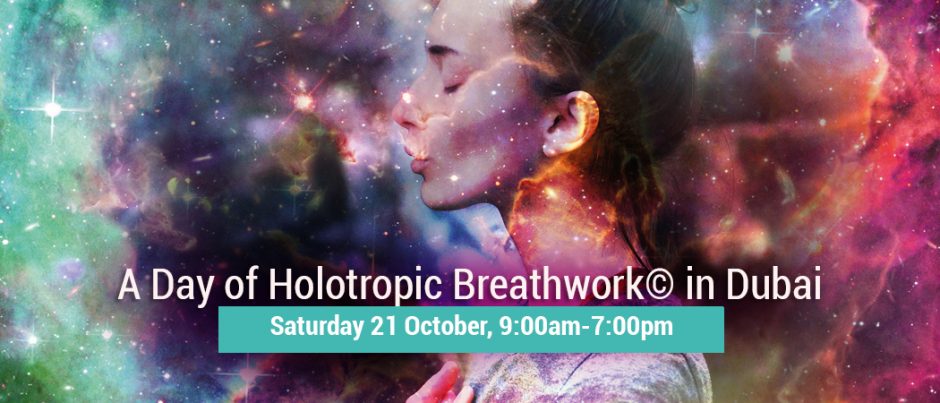Stanislav and Christina Grof created Holotropic Breathwork after doing extensive research that revealed that people have the ability to heal when they’re in a ‘non-ordinary’ or expanded state of consciousness.
Expanded states are nothing scary or foreign; examples of non-induced expanded states include sleep and dreaming. Most cultures have devised ways of inducing expanded states of consciousness; these include plant medicine, fasting and trance dance.
All beings move towards ‘Wholeness’. Any effort to heal yourself accelerates the process of moving towards Wholeness, (towards more joy, groundedness, clarity, radiance, vitality, sense of unique preciousness, flow, abundance, connection to all of life and greater compassion for yourself and others).
The power to transform oneself comes from one’s Inner Healer, (or Inner Wisdom).
What Needs ‘Healing’?
What happens to us is not as important as how we REACT to our experiences. Sometimes our emotional reactions are so powerful or inconvenient that instead of feeling everything that comes up for us, we repress or deny some of the feelings. This leads to disintegration and lack of wholeness.
It’s like marking a page in a book because we know we haven’t gotten everything we can by reading that page just once.
These emotional ‘bookmarks’ try to get our attention to get us to finish the job. By re-experiencing ‘unfinished business’ in Holotropic Breathwork, we integrate the repressed or denied feelings.
COEX (Systems of Condensed Experiences)
Most of us will know what it’s like to react to an event with a seemingly disproportionate response. This is because some events trigger our memories and bring up all unprocessed emotions related to events our psyches perceive as similar.
For example, if Bob has unresolved emotions related to his traumatic birth when the umbilical cord was wrapped around his neck, any ‘similar’ experience, (e.g. having someone ‘playfully’ put their hands around his neck), will trigger a seemingly disproportionate response. This is because Bob is not just reacting to the current situation, he’s also reacting to unresolved feelings of panic related to his birth experience.
After we heal an unresolved issue, (whether with Holotropic or another modality), we are able to react to situations as they are, instead of over-reacting because of our ‘baggage’.
During Holotropic Breathwork, the Inner Healer (or Inner Wisdom) brings the most relevant unresolved issues into our consciousness. We ‘heal’ by becoming conscious.
The Four Domains
Experiences emerge from one or more of the following realms:
- Sensory: The Breather may feel energy moving through different parts of his/her body, or become aware of areas that are numb or painful. The Inner Healer will direct the Breather to move/act to resolve these issues.
- Biographical domain: We may relive past events that happened any time between our births and the present moment.
- Perinatal: This includes anything that happened during conception, time in the womb and birth.
- Transpersonal: This is the realm where we experience being more than just our ‘skin-encapsulated egos’, (i.e. more than just our personal stories and our bodies). This may include experiences of talking to angels or deities, reliving past lives/ancestral memories, feeling ‘at one’ with nature or entire groups of people, or identifying with being a specific animal.
Surrender to whatever the Inner Healer brings up, and flow with the experience.
Holotropic Breathwork can help to relieve trauma from any of the four domains. There are 2 types of trauma:
- Traumas by commission are the result of things that were done to us against our will (e.g. physical, verbal or sexual abuse)
- Traumas by omission result from unmet needs (e.g. a perceived lack of love, touch, praise or attention)
- Structure of the Workshop
At the workshop, participants choose a partner and decide who will breathe first. One member of the pair serves as the Sitter while the other is the Breather. The Sitter ensures that the Breather is physically safe, and provides assistance when the Breather requests it. The Sitter’s role is to bear witness and to give the Breather their full attention, (this can be very healing for people who suffer from feelings of being neglected).
The Breather lies down on a mattress, uses the simple breathing technique, and allows their Inner Healer to work for them. If they feel like doing so, they can move, stand, sit, dance or they may find themselves doing yoga postures.
After the first 3-hour session, the Breather does a drawing to express what he/she experienced. The Sitter gives the Breather time and space to describe their experience in as much detail as the Breather wishes. (This is very healing for people who suffer from a sense of not being heard, being silenced or not receiving enough sufficient attention.)
There’s a break for a light lunch, and then the pair swap roles for the second breathing session.
After dinner, the participants and facilitators gather in a circle and the participants share the highlights of their experiences. We talk about integrating the experience and about follow up support, and announce the date for the next workshop.
If the workshop is held over a weekend the timings will differ, usually with a breathwork session each day and time for integration.
